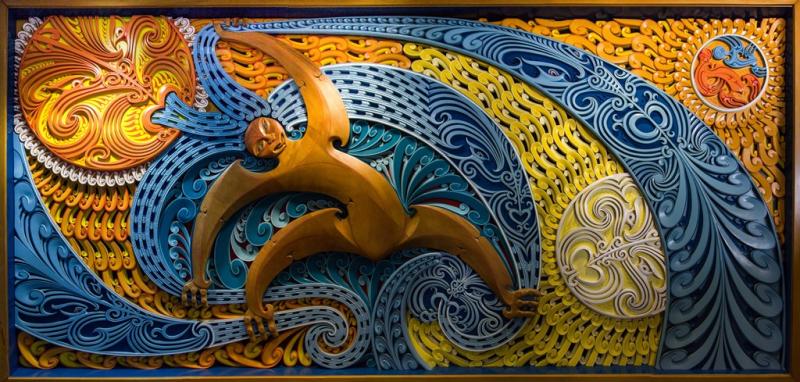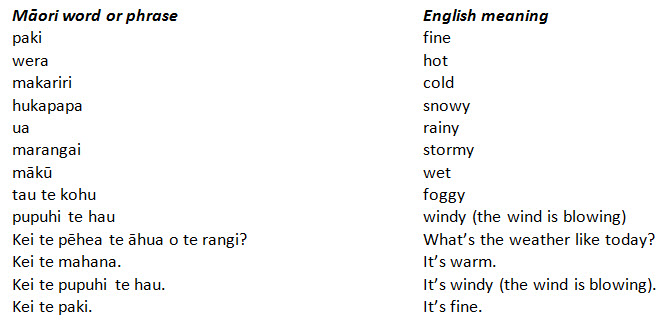
To mark Māori Language Week, this blog post brings together some practical weather words you can use every day, along with the story of Tāwhirimātea – god of the weather. Ko Tāwhirimātea te atua o te hau me ngā āwhā – Tāwhirimātea is the god of winds and storms.
Kei te pēhea te āhua o te rangi? How’s the weather?
Here’s a list of weather words you can use to describe the weather where you are. We hope you get to say ‘Kei te paki’ a lot! Click here to get help with your pronunciation from the Māori Language Commission’s website.

This information is courtesy of Te Kete Ipurangi, the online knowledge basket of the Ministry of Education – Te Tāhuhu o te Mātauranga.
For a list of learning te reo Māori resources, check out the Māori Language Commission’s website.
Tāwhirimātea – god of the weather
MetService is privileged to have in its care a treasured taonga (treasure): the carving Tāwhirimātea and children, which has pride of place in the reception area of our head office in Kelburn, Wellington (see image at the top of this blog). The mural was carved by Maori artist, heritage advocate and teacher Dr Cliff Whiting in 1978. It is made of kauri wood on high density fibre board and was painted using oil paints, (mural shown above).
The mural depicts Tāwhirimātea struggling to control his children, shown as blue spiral forms. Te Rā, the sun, is in the top left corner, and Te Marama, the moon, is in the opposite corner. At top right is a reference to the separation of Ranginui (the sky father) and Papatūānuku (the earth mother). The blue waves and fronds above Tāwhirimātea suggest his brothers Tangaroa (god of the sea) and Tāne (god of the forests).
In the creation story, the children of Ranginui and Papatūānuku wished to separate their parents so that light could come into the world. The only brother who did not agree to this was Tāwhirimātea, the god of wind and storms. When Ranginui and Papatūānuku were separated, he ascended to the sky to be with his father. Together they plotted revenge against the other brothers. You can read more about the story of the separation of Rangi and Papa on the Te Ara website:
Basil Keane. 'Tāwhirimātea – the weather', Te Ara - the Encyclopedia of New Zealand, updated 12-Oct-15
Here are a couple of other depictions of Tāwhirimātea that you might have seen before:
 Wood carving at the Arataki Visitor Centre, Auckland (Public domain image/Wikipedia Commons)
Wood carving at the Arataki Visitor Centre, Auckland (Public domain image/Wikipedia Commons)
 Pou at Entry A of Eden Park, Auckland. Carved by Iwi Le Comte in 2010. (Photo courtesy of Paul Hafner)
Pou at Entry A of Eden Park, Auckland. Carved by Iwi Le Comte in 2010. (Photo courtesy of Paul Hafner)